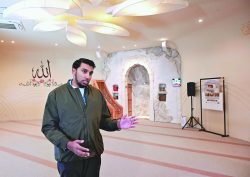16:39 JST, July 7, 2024
The number of children who have difficulty being taken care of by their biological parents has exceeded 40,000 across the nation. In 2016, the Child Welfare Law was amended to specify the principle of placing priority on family-based care by foster parents and others, a shift from group care at child welfare centers and other residential facilities, which had been standard practice.
The foster care system is structured so that households wishing to accept such children register in advance with their local government and look after the children after being entrusted with them.
Unlike adoption, the foster care system does not involve legal family relationships. The length of time that children are placed in foster care varies depending on their individual circumstances. Child-rearing expenses are covered by public funds. The number of registered households has increased every year, reaching about 16,000 in fiscal 2021. It is hoped that the figure will continue to rise steadily.
The central government aims for such households to take in 75% of infants or toddlers in need of foster care and 50% of children of school age. However, the acceptance rate actually stands at only about 20% of children needing care.
This is attributable to the fact that many foster parents prefer relatively young children, which does not mesh well with requests from local governments. There is also a tendency among the registered families to decide whether to accept a child based on the age difference between the child and their own children, and the child’s gender.
In June, the Internal Affairs and Communications Ministry recommended that the Children and Families Agency develop an environment that will make it easier for foster parents with no experience in rearing a foster child to accept children, through such steps as short-term entrustment in which they look after children in need of foster care for several days. It is hoped that families will be able to take in a wider range of children by gaining experience in foster care.
Half of prospective foster families are double-income households. There is a rule that if such families accept a child, they are given priority to use childcare facilities, but some local governments were not aware of this rule, leading some families to give up on taking in a child.
Many foster parents have faced difficulty as they cannot build a positive relationship with the children whom they have accepted. It is necessary to develop a system to support foster parents.
Niigata City has kept its acceptance rate in the 50% range by holding information sessions for those interested in becoming foster parents and offering consultation services for foster parents who actually have taken in children.
Cooperation with private welfare organizations and other entities is also crucial. While local governments usually make their personnel changes in a short period of time, entities in the private sector are likely to be able to provide longer support. Each municipality is urged to come up with a support system that is suited to its actual situation.
The environment surrounding children has worsened in recent years. The number of abuse cases handled by child consultation centers hit a record high of about 220,000 in fiscal 2022. The number of children in financial distress has also risen. Children with emotional scars and foster parents looking after such children must not be isolated.
(From The Yomiuri Shimbun, July 7, 2024)
"Editorial & Columns" POPULAR ARTICLE
-

Artificial Intelligence Expands Possibilities for Foreign Language Learners
-

Build Intellectual, Physical Strength, As Well As Communicative Power / Japan Should Move from Beneficiary to Shaper of World Order
-

Global Economy in Turmoil: Prevent Free Trade System from Going Adrift / Risks to Financial Markets Must Be Heeded
-

Japan-China Strain Set to Persist as Beijing Officials Self-Interestedly Bash Tokyo; Takaichi Unlikely to Back Down
-

Elderly People Living Alone: What Should be Done to Ensure Living with Peace of Mind until the End?
JN ACCESS RANKING
-

Japan Govt Adopts Measures to Curb Mega Solar Power Plant Projects Amid Environmental Concerns
-

Core Inflation in Tokyo Slows in December but Stays above BOJ Target
-

Major Japan Firms’ Average Winter Bonus Tops ¥1 Mil.
-

Bank of Japan Considered U.S. Tariffs, Coming Shunto Wage Hike Talks in Its Decision to Raise Interest Rates
-

Tokyo Zoo Wolf Believed to Have Used Vegetation Growing on Wall to Climb, Escape; Animal Living Happily after Recapture




























